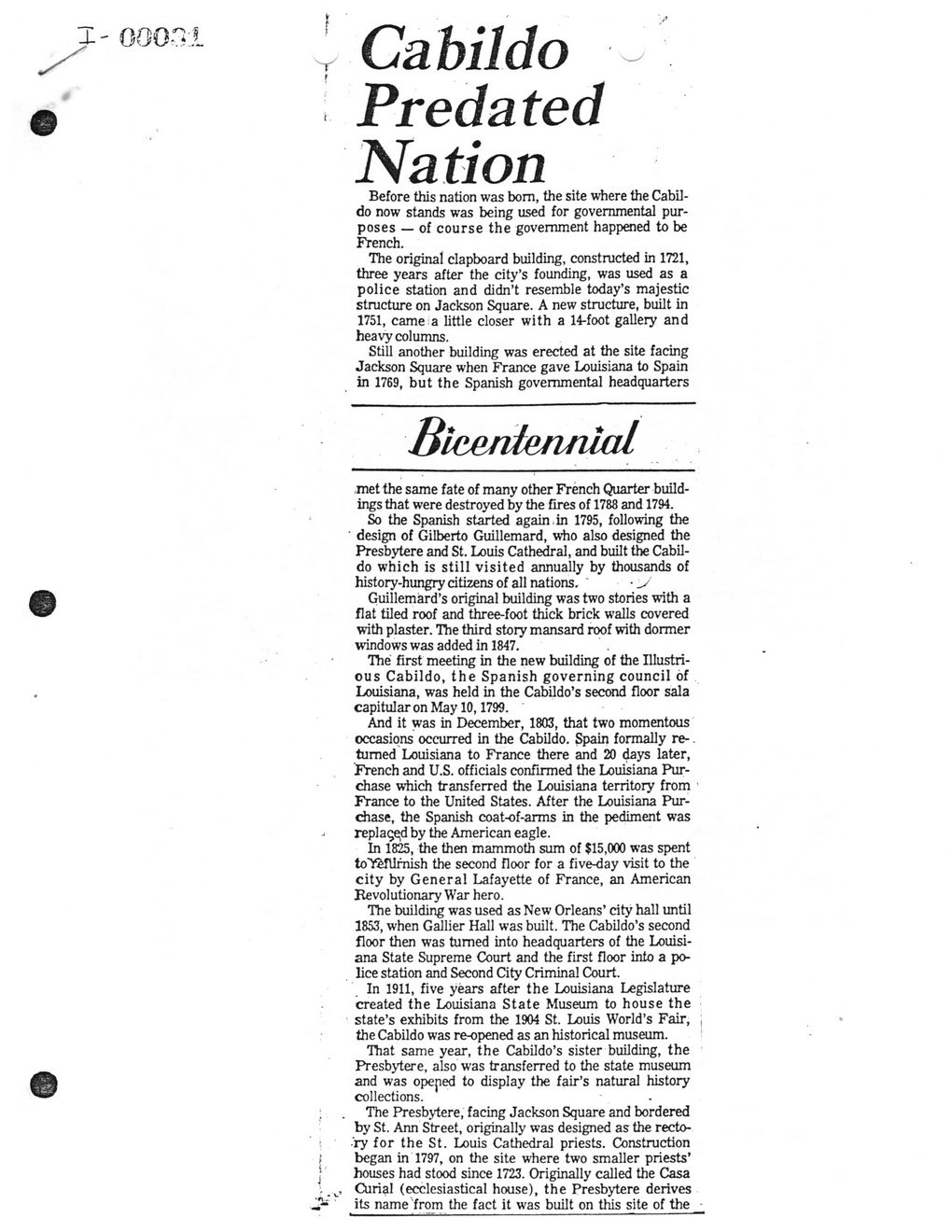This text was obtained via automated optical character recognition.
It has not been edited and may therefore contain several errors.
Cabildo - Predated Nation Before this nation was bom, the site where the Cabildo now stands was being used for governmental purposes — of course the government happened to be French. The original clapboard building, constructed in 1721, three years after the city’s founding, was used as a police station and didn’t resemble today’s majestic structure on Jackson Square. A new structure, built in 1751, camera little closer with a 14-foot gallery and heavy columns. Still another building was erected at the site facing Jackson Square when France gave Louisiana to Spain in 1769, but the Spanish governmental headquarters Sltentenmal .met the same fate of many other French Quarter buildings that were destroyed by the fires of 1788 and 1794. So the Spanish started again in 1795, following the design of Gilberto Guillemard, who also designed the Presbytere and St. Louis Cathedral, and built the Cabildo which is still visited annually by thousands of history-hungry citizens of all nations. Guillemard’s original building was two stories with a flat tiled roof and three-foot thick brick walls covered with plaster. The third story mansard roof with dormer windows was added in 1847. 'Hie first meeting in the new building of the Ulustri-ous Cabildo, the Spanish governing council of Louisiana, was held in the Cabildo’s second floor sala capitular on May 10,1799. And it was in December, 1803, that two momentous occasions occurred in the Cabildo. Spain formally re-. turned Louisiana to France there and 20 days later, French and U.S. officials confirmed the Louisiana Purchase which transferred the Louisiana territory from France to the United States. After the Louisiana Purchase, the Spanish coat-of-arms in the pediment was repla^d by the American eagle. In 1825, the then mammoth sum of $15,000 was spent to'ifefUrnish the second floor for a five-day visit to the city by General Lafayette of France, an American Revolutionary War hero. The building was used as New Orleans’ city hall until 1853, when Gallier Hall was built. The Cabildo’s second floor then was turned into headquarters of the Louisiana State Supreme Court and the first floor into a police station and Second City Criminal Court. In 1911, five years after the Louisiana Legislature created the Louisiana State Museum to house the state’s exhibits from the 1904 St. Louis World’s Fair, , the Cabildo was re-opened as an historical museum. 1 That same year, the Cabildo’s sister building, the Presbytere, also was transferred to the state museum and was opeped to display the fair’s natural history collections. The Presbytere, facing Jackson Square and bordered by St. Ann Street, originally was designed as the rectory for the St. Louis Cathedral priests. Construction began in 1797, on the site where two smaller priests’ houses had stood since 1723. Originally called the Casa Curial (ecclesiastical house), the Presbytere derives its name'from the fact it was built on this site of the

New Orleans and Louisiana Document (007)